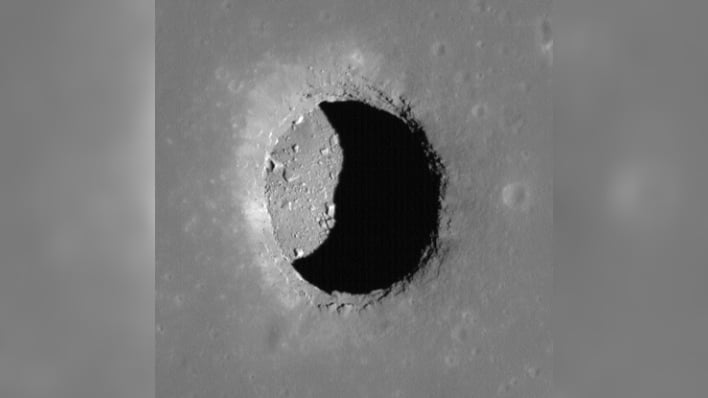
A group of scientists using data from a 2010 NASA lunar mission believe they have confirmed the existence of an accessible rock tunnel beneath the lunar surface. The team analyzed a series of images from 2010 with recently developed complex signal processing technologies to come to their conclusion.
The surface of the Moon is a harsh environment, which can reach temperatures of up to 260 F (about 127 C) during the day and minus 280 F (about minus 173 C) at night. It also comprises 150 times the radiation as on the surface of the Earth, along with micro-meteors raining down from the heavens, and its surface comprising highly abrasive dust. With NASA planning future bases on the Moon for exploration and as a jumping off point for future missions to Mars, it is also exploring ways of creating a habitable environment for humans to make extended stays on the Moon.
One theory that has been tossed around is to use pits and caves that the Moon was thought to already provide. During the Apollo era, images showed large, deep craters which eventually were determined to be empty lava pits. Scientists long wondered if these were connected to deep lava tubes, and if so, could they be used for future inhabitation of the Moon by humans. However, much about these supposed pits and caves has remained uncertain for over 50 years, until now.
“Lunar caves have remained a mystery for over 50 years. So it was exciting to be able to finally prove the existence” of one, Leonardo Carrer and Lorenzo Bruzzone of the University of Trento remarked.
In the study, the authors remarked, “We find that a portion of the radar reflections originating from the MTP can be attributed to a subsurface cave conduit tens of metres long, suggesting that the MTP leads to an accessible cave conduit beneath the Moon’s surface. This discovery suggests that the MTP is a promising site for a lunar base, as it offers shelter from the harsh surface environment and could support long-term human exploration of the Moon.”
The findings of the team suggest there could be hundreds of pits on the moon, along with thousands of lava tubes. If so, these could serve as a natural shelter for future astronauts, doing away with expensive habitats built from scratch which would be more time consuming and challenging. Along with providing shelter, scientists believe the rocks and other material within the caves could help them to better understand how the moon evolved.
There are still many questions that will have to be answered before NASA can make any firm determinations of whether to use these pits and caves for future inhabitation, but having confirmation of their existence is a good start.